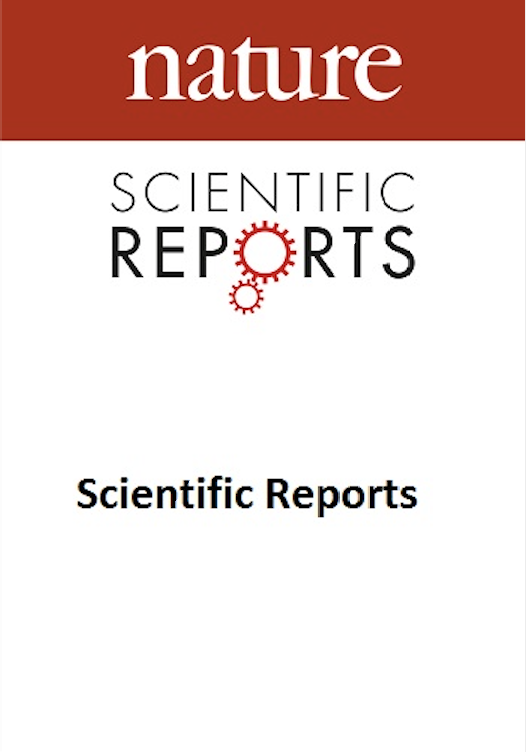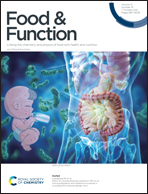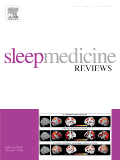Sedative-Hypnotic
How to submit an article:
- Registered users can submit any published journal article that has a unique DOI (Digital Object Identifier) name or link to Research Hub.
- For example, you can paste the full DOI link:
https://doi.org/10.1109/5.771073or just the DOI name:10.1109/5.771073into the field above and click submit. - The person who is first to submit a valid article to Research Hub will forever be credited for it, and every article submission earns you +6 Research Points.
Related Topics
Published research studies are articles that present the findings of original research that has undergone a peer-review process and has been made publicly available in scholarly journals, books or other media.

Effects of Green Kiwifruit Peel Extract on Sleep-Wake Profiles in Mice: A Polysomnographic Study Based on Electroencephalogram and Electromyogram Recordings
2022 Nov 09 Nutrients Kim D, Yoon M, Kim S, Um MY, Cho S
Experimental Study Animal StudyThe ethanol extract from green kiwifruit peel enhances sleep duration and onset, proving to be a potential natural aid for treating sleep disorders.

Uncovering the pharmacological mechanism of the effects of the Banxia-Xiakucao Chinese Herb Pair on sleep disorder by a systems pharmacology approach
2020 Nov 24 Scientific Reports Guo J, Lou MP, Hu LL, Zhang X
BXHP contains a large number of bioactive compounds with different pharmacological properties. Additionally, the present study showed that the sedative-hypnotic effects of BXHP in patients with SD primarily operate via reductions in inflammation and the mediation of immune and CNS neurotransmitters that regulate multiple targets and pathways.
Network Pharmacology Insomnia Ban Xia Xia Ku Cao
Targets and underlying mechanisms related to the sedative and hypnotic activities of saponin extracts from semen Ziziphus jujube
2020 Jan Food & Function Shen CY, Wan L, Zhu JJ, Jiang JG
Both SZJ-I and SZJ-II demonstrated significant sedative-hypnotic activities, as evidenced by shortened immobility time and potentiation of sodium pentobarbital-induced sleep. SZJ-II, with a higher saponin content, exhibited greater potency. SZJ-I and SZJ-II also protected against PCPA-induced neuropathological damages in the brain and modulated neurotransmitter levels (5-HT, dopamine, noradrenaline, glutamate), inflammatory markers (IL-6, IL-1β), and other signaling molecules (nitric oxide, prostaglandin D2) in plasma. Furthermore, SZJ-I and SZJ-II differentially regulated the expression of various receptors and enzymes in the hypothalamus and hippocampus, suggesting multiple mechanisms contributing to their sedative-hypnotic effects.
Experimental Study Animal Study Suan Zao Ren
Chinese medicines with sedative–hypnotic effects and their active components
2016 Oct Sleep Medicine Reviews Shi MM, Piao JH, Xu XL, Zhu L, Yang L, Lin FL, et al.
The study concludes that active ingredients from TCM, including alkaloids, terpenoids, volatile oils, flavonoids, lignanoids and coumarins, saponins, and others, exhibit sedative-hypnotic effects. Current research on TCM's treatment of insomnia is discussed, covering aspects such as active ingredients, sources, experimental models and methods, results, and mechanisms. Additionally, Chinese compound prescriptions derived from various single herbs with sedative-hypnotic effects are introduced, and the acting pathways of TCM are explored in terms of regulating central neurotransmitters, influencing sleep-related cytokines, and improving the structure of the central nervous system.
Systematic Review Review Article Sedative-Hypnotic SleepResearch insights are moderated by the Research Hub team and offer an at-a-glance overview of interesting research findings.

2022 Nutrients
The ethanol extract from green kiwifruit peel enhances sleep duration and onset, proving to be a potential natural aid for treating sleep disorders.
Experimental Study
Effects of Green Kiwifruit Peel Extract on Sleep-Wake Profiles in Mice: A Polysomnographic Study Based on Electroencephalogram and Electromyogram Recordings
Kim D, Yoon M, Kim S, Um MY, Cho S
Review Articles
Review articles summarise and critically evaluate the current state of research on a specific topic or field by synthesising multiple primary research studies.
Clinical Trials
Clinical trials are research studies that involve people and are conducted to evaluate the safety and efficacy of new treatments or interventions, such as drugs, medical devices, or behavioural therapies.
Study Protocols
Published study protocols are detailed plans that outline the objectives, methodology, statistical analyses, and organisation of a research study that have been made publicly available for others to review and use as a reference.
Presentation Slides

Experimental Study
The ethanol extract from green kiwifruit peel enhances sleep duration and onset, proving to be a potential natural aid for treating sleep disorders.
Kim D, Yoon M, Kim S, Um MY, Cho S
Executive Summary
Write an executive summary in the form of a blog article on the topic of "Research into Chinese medicine treatment for Sedative-Hypnotic" summarising the research below and using language that can be easily understood by patients and avoiding medical jargon using a professional and caring tone of voice.
Write an executive summary in the form of a blog article on the topic of "Researched Chinese medicine treatments for Sedative-Hypnotic" summarising the research below in an objective and easy to understand way, and using language that can be easily understood by patients. Group the article into Chinese medicine treatments first, followed by nutrition and other treatments. Avoid using medical jargon and use a professional and caring tone of voice.
Write me a concise but easy to understand executive summary on the topic of "Chinese medicine treatments for Sedative-Hypnotic" based on the following research that I will give you. Your summary should be 2 paragraphs long in Australian English spelling and include references to the studies.
A Experimental Study published in 2022 in the journal Nutrients found that The ethanol extract from green kiwifruit peel enhances sleep duration and onset, proving to be a potential natural aid for treating sleep disorders. The study employed the electroencephalogram (EEG) and electromyogram analysis methodologies in mice to investigate the sleep-promoting effects of the kiwifruit peel extract. Each participant mouse was administered with varying doses (250, 500, and 1000 mg/kg) of green kiwifruit peel ethanol extract (GKPEE) and their sleep duration, latency and onset were consistently observed and recorded. For comparison purposes, results were weighed against similar analyses conducted using diazepam, a traditional sedative-hypnotic drug. In terms of results, the findings indicated that acute administration of GKPEE significantly increased non-rapid eye movement sleep and decreased sleep latency, in a dose-dependent relationship. Moreover, the effects did not alter delta activity, differing significantly from diazepam outcomes. Notably, these effects prevailed even with sub-chronic administration over 15 days, with the EEG power density not revealing any noteworthy differences - an indicator of the absence of a tolerance phenomenon. Additionally, these results suggest an alternative usage of kiwifruit by-products from the food industry, providing possible environmental benefits.
Moderation Tools
Topic
Sign In
Users not signed in are limited to viewing the 5 most recent items of content.